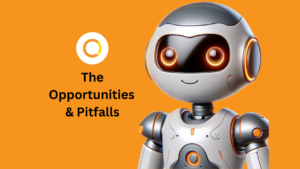“So, you’re thinking about launching an AI and automation program? It’s the kind of move that can set your organisation apart in a competitive world. But with great potential comes a lot of uncertainty—what exactly can you expect as you head down this path?”
Setting the Right Expectations
Before you commit to any major investment, you need to know both the short-term and long-term benefits. AI and automation, when done right, can deliver measurable outcomes in the early stages—think faster processes, fewer manual tasks, and cost savings. These immediate wins are the low-hanging fruit, the quick fixes that boost productivity and get everyone’s attention.
It’s important to have quick wins that everyone can rally around. These are the improvements you can count on to get the board’s attention. Automating routine tasks—whether it’s in finance, HR, or customer service—will save time and make people feel like the wheels are turning faster.
But the real value comes later. It’s easy to get caught up in those shiny first results and lose sight of the bigger goal. AI isn’t just about making things quicker today; it’s about setting yourself up for a much bigger impact down the road.
Looking at the Long Term: The Bigger Picture
Over time, AI can evolve to deliver more complex advantages, like transforming how your business makes decisions or improving customer experiences in ways you might not have imagined yet. It will start transforming how you operate. This long-term potential is where AI starts to shine, but it also requires patience and consistent effort to get there.
Consider Jim Collins’ flywheel analogy from his business classic ‘Good to Great’:
“No matter how dramatic the end result, good-to-great transformations never happen in one fell swoop. There is no single defining action, no one killer innovation, no solitary lucky break, no miracle moment. Rather, the process resembles relentlessly pushing a giant, heavy flywheel, turn upon turn, building momentum until a point of breakthrough, and beyond.”
Every improvement in your AI and automation efforts is a turn of that flywheel, eventually driving exponential growth and efficiency. AI’s deeper capabilities—predictive analytics, customer journey mapping, or autonomous decision-making—take time to build and fine-tune. There’s no shortcut to that level of sophistication. It takes time, effort, and a bit of patience.
That’s why a long-term strategy matters. The organisations that do well with AI and automation aren’t the ones who rush through it. Your organisation needs to stay focused on continuous improvement; treat the first year as just the beginning and make sure you’ve got a strategy that’s more marathon than sprint.
Challenges You’ll Need to Face Head-On
There’s no sugar-coating it—establishing AI and automation in your organisation is no small task. One of the biggest hurdles is often human: getting buy-in from your teams. Employees might be wary of automation, and with good reason. Concerns about job security can create tension, which, if left unchecked, may affect morale and productivity. Addressing these concerns openly from day one can build trust and keep momentum strong.
You might also face technical challenges. Data might be scattered across departments, and not all of it will be AI-friendly from the get-go. Plus, you’ll need to make sure your infrastructure can handle the change. These issues aren’t showstoppers, but they do require planning.
Finding the Balance
The excitement surrounding AI is hard to ignore. But it’s important to strike a balance between optimism and realism. Yes, AI and automation can deliver extraordinary benefits, but it’s not going to be an overnight success story. You’ll need the right leadership, a clear strategy, and an openness to adapt. Don’t lose sight of why you’re doing this in the first place—building a smarter, more responsive organisation that can handle whatever comes its way.
Is your organisation ready to embrace the future of AI and automation? Let’s sit down and explore how these technologies can position your business to thrive in the long run.
